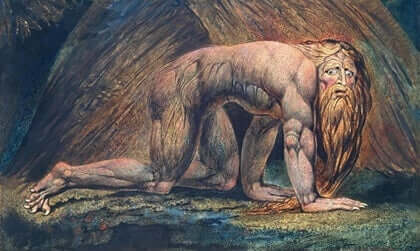He discovers the biography of William Blake, an artistic genius who gave life to painting, engraving and poetry, yet he himself lived in darkness and died in poverty. During his life, his vision of art was never recognized, with his spirituality, fantasy and idealistic style at the same time.
Almost unknowingly, he anticipated, with his brushstrokes and verses, the basis of romanticism that would come soon after.
- Blake is probably one of the most unique and interesting artists in our history; it was related to sacred and biblical mysticism so special that it was inspired; however.
- He was also a disturbing man and was often described as crazy about the visions he claimed to have.
- Have since the age of four.
Throughout his life he said he had received visits from eded and also demonic entities, presences that guided his style and art to sketch many of his engravings, as well as many of his books.
Works such as Urizen, Athania’s Book, The Book of Los, Vala and Quatro Zoas include a prophetic style rarely seen, all of which led to him being nicknamed Bad Blake (Blake the Madman).
Despite madness, sickness or mere creative force, William Blake is now considered a reference in the art world, an misunderstood spirit who saw creation as a means to achieve his own divinity, to transcend beyond the material world in which he was always imprisoned. .
Painting and lyrics were his private aesthetic channel, in which he left the mark of his loneliness, emotions and overwhelming visionary ideals.
“I’m not interested in reasoning and comparison: my goal is to create” – W. Blake-
William Blake was born in London in 1757, belonged to a middle-class family, studied at home with his 7 siblings and, at home, it all revolved around two very specific dimensions: the Bible and art.
Historians believe his parents belonged to a radical religious sect known as “dissidents,” which could further mark the mystical and spiritual vision that would inspire him so much in his artistic maturity.
Although he did not attend any school, William Blake always felt a great attraction to drawing, copied works by Raphael, Michelangelo, Marten Heemskerk and Albrecht Durero and, with the help of his mother, was able to explore the poetic genre in the works. ben Jonson and Edmund Spenser.
He was a young man with great artistic determination, he had such an impulse that he became an apprentice engraver (some authors call him an engraver) in 1772. This course lasted 7 years and Blake became an artist at the Antiquities Society and Society Réel.
At the age of 21, he began working for several publishers, copying engravings of the graves of kings and queens of Westminster Abbey.
He later completed his training as a painter after being admitted to the design schools of the Royal Academy of Art, in this first stage of his life, it was common for many of his works to depart directly from the visions he had lived since childhood. Around him and, according to Blake himself, the sight of monks, angels and demons was common.
In 1782, William Blake married the young Catherine Boucher. She was a humble-class girl who was taught to read and write. He also introduced him to the art world, trained him in engraving to make him his life and work partner.
At that time, William and his brother Robert raised enough capital to open a printing press. This allowed them to support all the dissident intellectuals of the time; philosophers, writers and revolutionary scientists, such as Joseph Priestley, Richard Price, Henry Fuselli and Mary Wollstonecraft (one of the first feminists and mother of Mary Shelley, author of Frankenstein).
William Blake has published his own works, such as poetic sketches, songs of innocence and visions of albion girls, in the latter he defended aspects as advanced as women’s right to personal development.
At this time he began to innovate in his engraving technique, after one of his visions, he tried the technique of engraving to illustrate the books of poems, thus shaping what he called an illuminated engraving.
Between 1775 and 1789 there were two great revolutions in the world: American and French; all these social movements were also a great source of inspiration for William Blake, who has always defended a freedom exalted by individualism, very much in the line of Nietzsche.
“If the doors of perception were cleaned, everything would seem to man as he really is: infinite. ” – Willian Blake-
In 1804, William Blake began his most ambitious work: Jerusalem, a book he illustrated and wrote as he began to exhibit several of his works, such as The Pilgrims of Chaucer and Satan invoking his legions.
However, all his works, literary and artistic, received nothing but mockery, indifference or criticism that called him the unfortunate madman Blake, the madman.
From 1809, Blake became embroiled in his own ostracism. The unsenchantment and awareness that his work would never be recognized caused him to separate a little more from his engravings, brushes and verses. Gradually it sank into darkness and absolute poverty. He died at the age of 65 and was buried at Bunhill Fields Cemetery in London.
William Blake was not a painter of nature, like many British artists of his time, but avoided direct observation because his inspiration came from within: from his convulsive universe and inhabited by prophetic visions.
His eyes did not look at the sunrise, the trees in the wind, neither the oceans nor the abbeys, as in the work of Caspar David Friedrich.
Blake’s poetic heritage and engravings are the darkness of the unattainable. There is also this mystical force that instantly frightens, worries and seems to reveal an indecipherable message.
For many critics, his work was blasphemous, others guessed in his verses and drawings that prophetic air that would make him a key and exceptional figure of romanticism.

